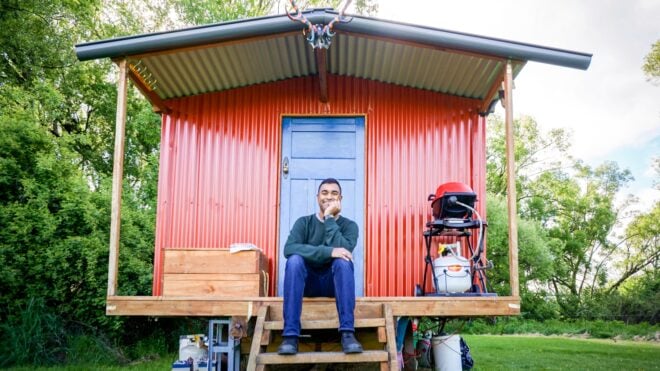
In this article
For many Jewish families who are under orders to stay at home, this will be the first Passover celebration and seder they observe without aunts, uncles, or grandparents present.
Passover is celebrated on the 15th day of the Hebrew month Nisan. Passover 2020 begins at sundown on April 8, the night of the first seder — the feast that marks the beginning of Passover — and lasts seven or eight days, depending upon your Jewish tradition. For most US Jews, the last day of Passover this year will be April 15.
So that everyone can share in this meaningful celebration, here are some tips for explaining Passover to young ones.
Explaining Passover to young children

Note: There are four major Jewish denominations in the United States, each following their own interpretations of the ancient rules and traditions. For simplicity, this article will refer to guidance from the Union of Reform Judaism.
Passover is the most kid-friendly of the major Jewish holidays, perhaps because the entire point of the celebration is to tell the next generation the story of how their ancestors escaped slavery in Egypt and made their way to the Promised Land. We tell the story through family participation: ritual, symbolic foods, four cups of wine (or grape juice), and a focus on our youngest members.
“The ancient rabbis could have chosen any scholar, teacher, or leader to tell this story to our children, but instead they chose parents — us, even with our flaws and our deficits — to be an integral part of passing down this story,” writes Rabbi Sara Y. Sapadin on ReformJudaism.org. “The rabbis must have known that sometimes the least perfect method is the most perfect solution — and so it continues today. These obligations are ours to protest and to cherish, year after year.”
I enrolled my daughter in a Jewish preschool when she was very young, and the teachers there immersed the kids in activities that left them prepared and ready for the real thing. The children made their own Kiddush cups and decorated seder plates, and learned the Four Questions they would be asking at their own seder tables.
Linda Schwartz did not have the option of sending her three children to a synagogue early childhood program, so she found other ways to teach them about the holiday. “Since we are not very observant, I was most comfortable getting a couple of children's books and reading them with the kids to explain Passover,” she told Mom.com.
Passover resources for parents and kids
When talking to children about Passover, it helps to have activities and materials that can explain the holiday to them in a manner that they can relate to. Here are some resources for kids that will help them understand the meaning of the holiday in a way that even the youngest minds can grasp.

PJ Library is an organization that partners with Jewish organizations to provide free books to Jewish children of all ages. They also have a ton of online resources to entertain and educate kids about all the major holidays, including this Passover content, featuring activities that parents and children can work on together, and even a downloadable, child-friendly PDF haggadah.
Jewish Learning Matters also offers a ton of material to help you and your kids prepare for the holiday.
For a fun, unexpected take on Passover, the old Nickelodeon animated series, Rugrats, produced a third-season Passover episode that does a great job of explaining the holiday, while entertaining the entire family.
The Four Questions

The word “seder” means “order,” and the haggadah is your guide to how your celebration is ordered.
The haggadah is derived from texts compiled between 200 and 500 CE. According to the editors of Tablet magazine, “as the haggadah is, at its core, a compilation, many communities or families add their own traditions, rituals, and texts to the original, often pertaining to social or political issues such as women’s rights or the plight of African refugees.”
If I were to pick the core part of the text for families, it would be the Four Questions. It not only involves the younger guests, but helps to focus on the meaning of the holiday.
The family members take turns telling the Passover story by reading and following the instructions in the Haggadah. Early in the seder, the youngest person present has the responsibility of asking the Four Questions, which all relate to the evening's key theme: "How is this night different from all other nights?" They will ask their gathered guests:
- On all other nights, we eat chametz(leavened foods) and matzah. Why, on this night, only matzah?
- On all other nights, we eat all vegetables. Why, on this night, maror (bitter herbs)?
- On all other nights, we don't dip even once. Why, on this night, do we dip twice?
- On all other nights, we eat either sitting upright or reclining. Why, on this night, do we all recline?
It is the duty of the rest of the seder guests to answer those questions. Fortunately, it’s all in the haggadah.
“As parents, we can take great comfort in knowing that, in Passover as in life, there are far more questions than there are answers. The deeper we probe, the more we uncover," counseled Rabbi Sapadin.
"As we are taught, we begin the story with the youngest asking the four questions, because the ability to ask distinguishes the free person from the slave. In asking questions, we boldly exercise our precious gift of freedom and bravely stand up to those who would have kept us in slavery.”




